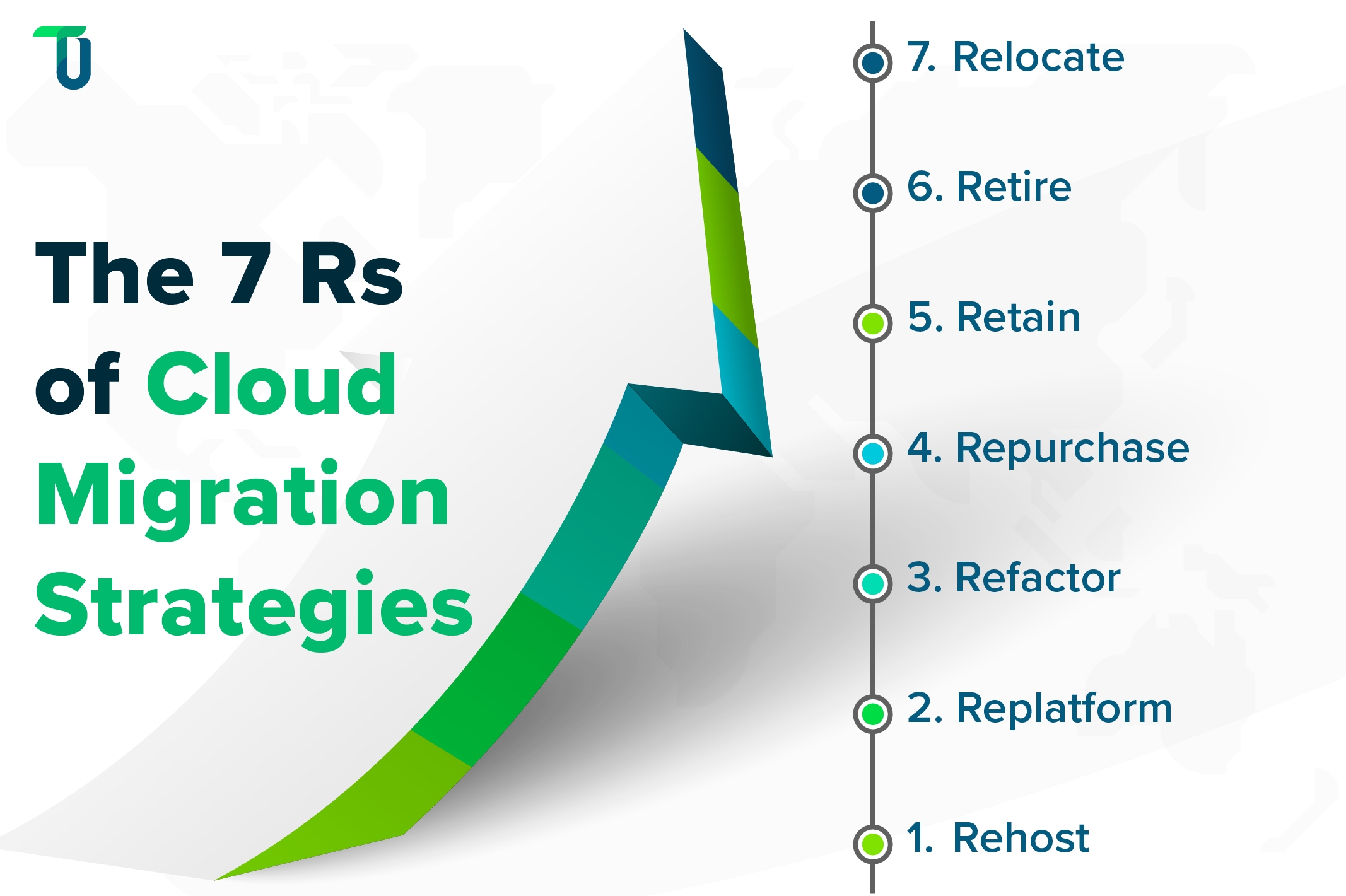
As businesses scale and embrace digital innovation, moving applications to the cloud has become essential rather than optional. Cloud migration enables organizations to enhance agility, optimize costs, and improve scalability. With nearly all enterprises leveraging cloud technologies, understanding the most effective migration strategies is crucial for success. In this guide, we explore the seven core cloud migration strategies—commonly referred to as the "7 Rs"—to help you choose the right approach for your business.
What is Cloud Application Migration?
Cloud application migration is the process of transferring software applications from on-premises infrastructure to cloud environments. It offers flexibility, reduces operational costs, and boosts system scalability. Organizations often apply tailored strategies instead of rebuilding applications from scratch. The primary options include:
Rehosting – Moving applications without modifying the code.
Replat forming – Making slight optimizations for improved cloud performance.
Refactoring – Redesigning applications to utilize cloud-native features.
By implementing the right strategy, businesses can modernize systems, minimize downtime, and remain competitive in the digital era.
An Overview of the 7 Rs of Cloud Migration
Each of the 7 Rs serves a unique purpose in helping businesses navigate the complexities of migration. Here’s a breakdown:

1. Rehost (Lift and Shift)
This strategy involves migrating applications to the cloud with minimal or no changes. It's best suited for quick transitions and can significantly reduce hardware costs.
Best For:
Organizations seeking rapid migration.
Applications that don’t require modification.
Companies aiming to test cloud viability before deeper investments.
Pros:
✔ Faster deployment
✔ Lower upfront cost
✔ Maintains application integrity
Cons:
✖ Limited access to cloud-native capabilities
✖ Potential performance limitations
2. Replat form (Lift, Tinker, and Shift)
Here, applications are moved to the cloud with small optimizations to take advantage of cloud services, such as managed databases or storage solutions.
Best For:
Businesses needing moderate improvements without rewriting code.
Apps that would benefit from minor tuning for scalability or performance.
Pros:
✔ Enhances performance with minor tweaks
✔ Access to cloud-native services
✔ Lower risk than full redevelopment
Cons:
✖ Possible integration challenges
✖ Requires some training for teams
3. Refactor (Re-architect)
Refactoring involves reengineering applications to fully leverage the cloud’s capabilities, such as microservices, serverless computing, and CI/CD pipelines.
Best For:
Legacy systems unable to meet modern demands.
Organizations aiming for long-term scalability and innovation.
Pros:
✔ Unlocks the full power of the cloud
✔ Improves agility and scalability
✔ Encourages innovation through modern architecture
Cons:
✖ Resource-intensive and time-consuming
✖ May cause operational disruptions
✖ Requires specialized expertise
4. Repurchase
Repurchasing means replacing existing software with a cloud-native alternative, often in the form of a SaaS solution.
Best For:
Businesses using outdated software lacking modern functionality.
Teams wanting to shift IT burden to third-party providers.
Pros:
✔ Regular feature updates
✔ Reduced maintenance responsibilities
✔ Scales with business growth
Cons:
✖ Data migration challenges
✖ Vendor lock-in risks
✖ Learning curve for new platforms
5. Retain
Some applications are better left on-premises due to compliance, performance, or cost concerns. Retaining ensures critical systems remain under direct control.
Best For:
Industries with strict data regulations
High-performance systems unsuitable for cloud latency
Applications with low ROI on migration
Pros:
✔ Full control and compliance
✔ Avoids unnecessary migration complexity
✔ No reconfiguration needed
Cons:
✖ Higher maintenance overhead
✖ Limited scalability
✖ May hinder digital transformation
6. Retire
Outdated or redundant applications are decommissioned to reduce overhead and simplify the IT landscape. Studies estimate that up to 30% of enterprise applications fall into this category.
Best For:
Systems no longer used or replaced by better alternatives
Applications without clear business value or upgrade potential
Pros:
✔ Cost savings from reduced maintenance
✔ Simplifies the IT environment
✔ Improves system performance overall
Cons:
✖ Must ensure proper data archiving
✖ Risk of losing legacy data without careful transition
7. Relocate
Relocation involves transferring workloads from one cloud or data center to another—ideal for optimizing pricing, performance, or strategic alignment.
Best For:
Cloud-to-cloud migration
Companies looking for better cloud service features
Cost optimization across providers
Pros:
✔ Potential cost savings
✔ Improved scalability and service availability
✔ Flexibility to choose better service terms
Cons:
✖ Complexity and risk of incompatibility
✖ Requires comprehensive testing to avoid disruptions
Choosing the Right Migration Path
Every business is unique, and so are its cloud migration needs. Selecting the right mix of strategies from the 7 Rs depends on various factors, including:
Application complexity
Business goals
Budget constraints
Compliance requirements
An experienced cloud partner can help assess your ecosystem, plan the best strategy, and implement a smooth transition.
Final Thoughts
Cloud migration is a transformative step in any organization’s digital journey. By understanding the 7 Rs, you can create a roadmap that balances short-term goals with long-term innovation. Whether you're lifting and shifting or fully refactoring, the key to successful migration lies in smart planning and choosing the right tools and strategies.
If you’re looking to start or optimize your cloud migration journey, consider working with professionals who understand both the technical and business sides of cloud adoption.
Need Help Navigating Cloud Migration?
Explore tailored solutions and expert support designed to ensure your migration journey is seamless and future-ready.
